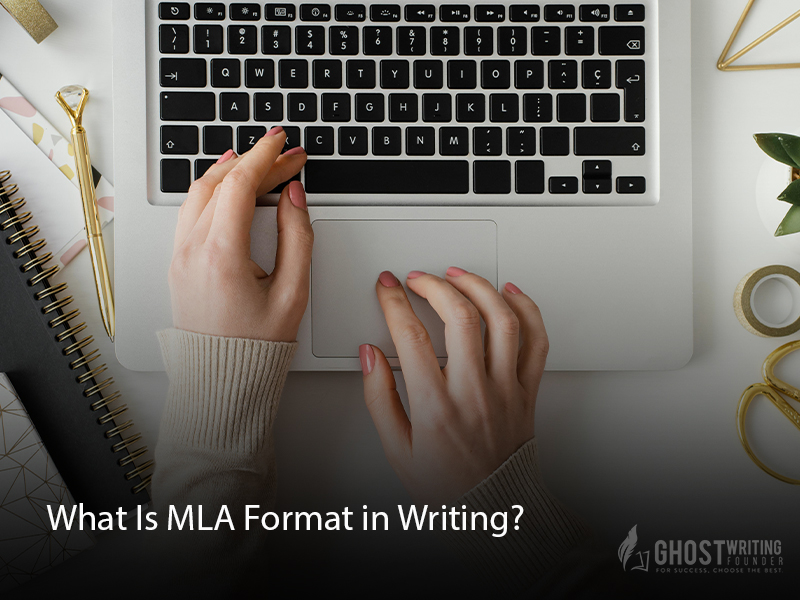
Writing
MLA stands for Modern Language Association. According to the Modern Language Association, MLA format is a style and reference guide to structure a research paper, articles, books, journals, and documents.
What is MLA format?
MLA Format and style guide present the rules and principles of citing the research papers for academic and creative writing purposes. Its a scholarly guide and mostly used by professionals of the Arts and humanities field that allows the writers to include references in their work through parenthetical citations and sources.
- Its allows the paper formatting, including the organization of content.
- It has general guideline related to content fonts, and structures
- provides citing sources references, including the in-text citations
- It has Author page citations guideline for classic and literary work
- It helps in the groundwork of the manuscript that is used for publication purposes.
As mentioned earlier, the MLA format is mainly used as a style guide by Authors and writers of the Humanities and Arts field.
- Language arts
- Anthropology
- Archeology
- Politics
- Law
- Religion
- Philosophy
- Literature
- Visual Arts
- Human culture
- Music
- Drama
- Comparative literature
- Foreign Languages and Literature
- Cultural studies
Who uses the MLA format?
Students chiefly use MLA format.It is also used by scholars, authors, researchers, writers, articulators, and academics writers. It is said to be the second most widely used writing format after the APA writing format. Subsequently, this format of writing applies to arts and humanities fields, as mentioned above. Therefore, it provides a comprehensive guideline that must be followed to emulate this style guide successfully. The basic guideline about the paper formatting shows how references should be mentioned and formatted, including the in-text citations.
Most of the time, the university or the school professors ask students to structure their paper according to the MLA format. However, if, for any reason, it is not mentioned how to cite your paper, ask your concerned teacher in which format they would like the manuscript. Following the writing MLA, format conventions help the writers and authors alike to produce consistent work. This helps in the certain identification of the communicative piece that can be perceived as scholarly.
This blog post highlights the basics and special MLA format and style guide to synchronize your work effectively. Regardless of your writing genre, the MLA format is used in the same manner throughout the world. Failing to adhere to the MLA format guideline will create inconsistency in your work. Those who value traditional and formal approach to writing will not be satisfied with your work.
College Student
If you are a college student and using this style for your research paper, double-check with your professor if you have formatted your paper correctly before turning in your paper for the final grading. If you believe your teacher will not allow pre-read, ask your friends and colleagues who are aware of this style guide. You can also search the MLA format on the internet like this article and evaluate your manuscript based on the recognized style.
Why use MLA format?
When you use MLA style with accuracy, it makes your work communicable to your readers. If your reader then has a habit of studying the research paper formatted in the MLA style, it would be beneficial for them to navigate your paper.
Your reader can skim and scan the text without any confusion or stopping in the middle of every paragraph to see the citations. Simultaneously, they can particularly focus on the text instead of the style. Your writing goal is to make your readers read the text you have writing down. If you are unable to do it for some reason, that means you are losing the interest of the scholarly people.
The second most important reason to cite your paper according to MLA is that it establishes your authority as a well-versed person. You can give your information without making yourself look a fool or ineligible to talk about a certain aspect. The scholarly people have a knack for writing traditions and conventions. If you are not following your MLA format properly, you are dissatisfying your readers with your skills.
Modern Language Association, MLA instruct every writer and the editor to keep an eye on the proper formatting because it creates consistency of your manuscript or the text within the field. Besides, your ideas will be perceived as thoughtful, well-written, efficient, and scholarly.
Last but not least, you can establish your credibility as a researcher among the academic organization and publishing house. Professors who utilize the MLA format will instantly recognize the value-driven standard work. And they may ask your fellow students to follow the MLA guideline in their essays, articles, and other form of write-ups.
Why cite your reference in MLA format?
- Citing your work in MLA format increase the validity and reliability of your work.
- You are protected from copyright violations. Likewise, you are ensured that you do not create plagiarized work.
- You become authoritative because you give credit to the original creator of the work.
- Your thoughts are structured.
- You introduce a strong argument in your writing, which makes you a thought leader.
What is covered in MLA writing format?
Like in the APA writing format, the MLA format also includes three main elements for the paper’s structure.
(a) MLA Basic format: this basic MLA format includes the layout of the page such as font size and style, page numbers, margins lines, the spacing of the fonts, titles, headings, quotations, abbreviations, and the body structure, including endnotes and footnotes.
(b)MLA In-text citation: In-text citations refer to secondary sources mentioned within the text’s body. MLA format talks about what and how sources should be mentioned and how to avoid when in-text citing.
(c) MLA Work Cited Page: This provides the general rules regarding the list of references. It requires to cite work differently according to the category, such as books, articles, journal articles, periodicals, electronic sources, and non-print sources.
The MLA format guideline:
Guideline Related to Basic MLA Format of the Paper:
MLA format asserts that the size of the paper should be 8.5 x 11-inch
- The spacing in between the text should be double spaced, 2.0
- Your font should be legible such as Times New Roman. In the case of heading and important text, you can also use the font’s bold and italic style.
- Font size should be 12 pt.
- Only one space should be left after the punctuation mark, such as a comma or a period. (if your instructor has given your specific guideline.
- Set the margins on all four corners of the page to 1nch.
- Include page number on every page in the upper right-hand corner.
- In case of the longer headings, use italics font for the long headings. Likewise, italics is also used to provide.
- Ensure that you create a running header with your last name on the upper right-hand corner of the page, followed by the page number.
- shall only make the title page if you are asked to make it by your instructors. There are specific guidelines regarding the title page that is mentioned below:
- Your name, instructor’s name, date, and the course title should be mentioned in the upper left-hand corner with double spacing.
- Write the name of the title of the page in the center in standard capital format. Make sure you do not underline, highlight, italicize it.
- When mentioning a secondary title on your title page, italicize it. For example, King Lear is a morality play.
- Double-space in between your title and the first line of the text on your document.
Guideline Related to MLA In-text citation Format of the Paper:
There are some basic rules of MLA format that you must adhere to all the time. Failing to meet and satisfy these requirements may result in marks deductions by your professor, and your work may appear as plagiarized if you do not give proper reference to the secondary source in your work. Here are a couple of things about the MLA format you need to ensure in your manuscript writing.
- According to the source’s medium, you are mentioning the parenthetical sources that will be used, such as a book, website content, print sources, and the bibliography page.
- Ensure that you’re in-text citations are aligned with the work cite pages. You can either use the name of the author or the name of the organization in your work. Whatever name you are using to refer to your secondary source, make sure both of them are consistent, i.e., in-text citation and the bibliography’s work cited page.
- Author, multiple authors, and citing multiple authors are cited differently within the text. Likewise, you must cite quotation and indirect reference to the secondary resource with precision.
- In the endnotes and footnotes, MLA discourages the use of long blocks of texts within the page. You can use these endnotes and footnotes before the work cited page. For example: In a 1998 interview, the company’s worker asserted: “I am an artist, not a politician!” (Jinkerson 1234).
Main Attributes and Elaborate Information
| Feature | Description | Significance in Academic Writing |
|---|---|---|
| General Structure | MLA format dictates paper size, spacing, font, and margins. Includes guidelines for headings and titles. | Ensures uniformity and readability in scholarly works. |
| In-text Citations | Rules for parenthetical citations within the text, aligning with the referenced works. | Facilitates the acknowledgment of sources, reducing plagiarism risk. |
| Reference Page | Detailed guidelines for listing all cited works at the end of the document. | Provides a comprehensive and accessible list of sources for further research. |
| Formatting Standards | Specific instructions for font size, page numbering, and title page creation. | Helps maintain a professional and organized appearance in academic papers. |
| Application Areas | Widely used in arts, humanities, language studies, cultural studies, etc. | Standardizes writing style across diverse academic disciplines. |
| Usage by Professionals | Utilized by students, scholars, authors, and researchers in various fields. | Enhances the credibility and clarity of scholarly communication. |
| Importance of Adherence | Following MLA guidelines is crucial for academic integrity and professional acceptance. | Ensures that written work meets the scholarly community’s expectations. |
Bibliography:
The MLA format of the work cited page should include the following aspect. Keep in mind, different types of resources are mentioned differently. However, few things should not be changed, such as the source page’s title, author name, the contributors’ name, the periodical number, the publisher, the date of the publication, and the location.
For example, Pinker, Rob, and Carla M. Spree. “Effects of Climate Change.” The Sun Shine Times, 18 May 2020, www.nytimes.com/video/world/americas/1194817109438/effect -of-climate-change.html. Accessed 11 January 2021.









Leave a Reply